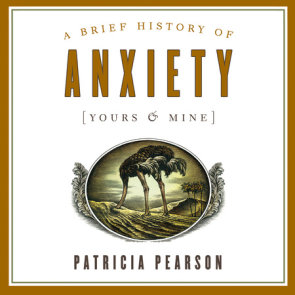READERS GUIDE
BEHIND THEIR SCREENSIn Behind Their Screens, Harvard researchers Emily Weinstein and Carrie James draw on a multiyear project that surveyed more than 3,500 teens to help grown ups understand the complicated nature of teens’ online lives. This reading guide offers parents, educators, and all adults who care about supporting teens an opportunity to reflect on how young people navigate our increasingly networked world and how we balance safety, empathy, and technology in response.
Questions and Topics for Discussion
1. Behind Their Screens reveals how teens responded to the question, “What worries you most about today’s digital world?” What worries you most about today’s connected world? Did you feel any connections with the worries described by teens in the book?
2. What do you see as the strongest positives and upsides of social media in your life? What stood out to you in terms of the most meaningful benefits of technology for teens?
3. The authors write about the salience of memories from the teen years and how we have strong memories associated with music in particular. Can you think of a song from your teen years that you associate with a particular memory? What emotions or feelings come back to you when you think of it?
4. The authors write at the very beginning that this project challenges many of their own assumptions about teens and technology. What’s one assumption this book challenges for you? (Do you have your own response to their prompt: I Used to Think __, Now I Think __?)
5. Families are managing social media, gaming, and cellphones in a variety of ways. What family rules or norms do you have around technology that have worked best? Have any backfired? After reading Behind Their Screens, are there any family rules or norms you will change?
6. Teens describe pressure to stay connected to everyone, and new stresses around keeping in touch and keeping up. The authors write: “Even if it’s technically possible to stay connected, evidence from research with both humans and primates indicates that we have a natural capacity to limit our social networks.” What do you see as the pros/cons of staying connected with anyone and everyone? Are there connections that you feel pressure to keep up because of social media?
7. “The Pull of the Screen” is real for all of us, and the authors describe how it’s amplified for adolescents who feel frustrated with their tech habits. What is a tech habit you have that you’d like to change for yourself? What’s getting in the way of making meaningful change? Have you asked the kids in your life if there are any tech habits they would like to change?
8. In Chapter 3, Aly and Jaylen’s story describes a situation where a friend is struggling “in public”: sharing depressed and even suicidal thoughts through their Snapchat story. What have you found helpful when supporting friends who are struggling either in private or in public? What do you want kids to know about supporting a friend who is struggling? What should they know to do if they see something like Jaylen’s posts on social media?
9. “From Small Slights to Big Fights” is the title of Chapter 4. Did the examples (especially of the more subtle jabs that happen over texting and social media) resonate with any experiences kids in your life have had? What kind of advice or support has seemed most helpful in these kinds of scenarios?
10. Chapter 5 digs into different complexities of sexting and the pressures and motives. What did you take away from this chapter? What do you think about the idea of “safer sexting” (page 112) that they reference?
11. How has social media shaped your own activism or civic engagement? What conversations have you had with kids in your life about social media and activism? Are there any conversations that you now want to have?
12. In the conclusion, the authors mention the importance of stronger oversight over technology companies. What kinds of policy regulations would you like to see for social media companies? How should tech companies take steps on their own to be more alert to the vulnerabilities of adolescents when they design apps?
13. Another key “room where it happens” is schools. Do the kids in your life talk about what they’re learning in school related to the topics discussed in the book? What do they tell you? What role should teachers and schools play in supporting students in the digital landscape?
14. The authors describe a set of keys to support conversations with teens: Asking over assuming; Empathy over eye rolling; Normalizing without minimizing; and Normalizing without essentializing. Do you already use one or more of these keys? Which keys stood out as helpful inspiration?
15. The authors spotlight stories of actual teens to bring to life different worries. Which story stayed with you and why?
About this Author
Emily Weinstein is a Research Director at Project Zero at Harvard and a Lecturer at the Graduate School of Education.Carrie James is a sociologist and Principal Investigator at Project Zero at the Harvard Graduate School of Education. She is the author of Disconnected: Youth, New Media, and the Ethics Gap (MIT Press).
The authors’ work has been covered in Time, the Boston Globe, the Washington Post, and the Atlantic, and they are sought-after speakers on teens and technology.






















